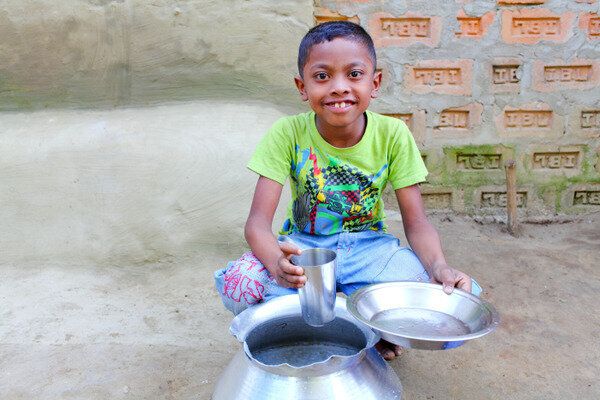The key theme at this year's Stockholm World Water Week is water and food security: how do we meet the ever developing needs of a growing population with an increasing demand for resources?
At WaterAid, we believe the answer lies in providing water and sanitation for basic human needs, and that targeting the poorest communities will have the greatest impact on overcoming poverty and achieving global water and food security.
The figures shared at this annual event are concerning. In the past 100 years, global population has increased 3.6 times, while the amount of water withdrawn has increased 6.8 times. This reflects a shift in diet as we consume more water-intensive food, highlighting that it's not just about population; it's about trends.
Meanwhile, today, more than 900 million people suffer from hunger while 783 million people have no access to a clean, safe water source.

But there is a positive message here; we have made a lot of progress - over 2billion people have accessed drinking water in the last two decades - showing that we should be capable of making the necessary changes to manage future growth more equitably.
The global population is set to reach nine billion by 2050 and demand for food will increase by 70%, placing yet more pressures on water supplies. So the challenge is how to meet those demands.
As explained in our new Water security framework, launched at the global water event, clean water, improved toilets, and hygiene have a considerable impact on livelihoods, the environment and agriculture. Consequently, there is little hope of achieving food security and overall wellbeing without ensuring water security at a local level.
Dirty water and poor sanitation have serious implications on health - according to the UN half the hospital beds in developing countries are filled with people suffering from diseases caused by poor water, sanitation and hygiene. This affects people's ability to farm and work, with a knock-on effect on both the availability of food and the ability to buy it. Similarly, relieving women and girls of the burden of water collection allows time for them to have an education and earn a living, leading to greater economic freedom and prosperity.
Improved water sources close to the home can be used to irrigate household kitchen gardens, providing additional nutrition in times of food shortages, while the bi-products of ecological sanitation can greatly enhance soil fertility and crop yields.
By improving access to clean, safe water and adequate toilets at a community level, the wider impacts will in turn spread to water and food security on a national and international level.
However, the majority of the money dedicated to improving access to water and sanitation in the developing world is currently spent in middle-income countries, meaning some of the poorest communities are being overlooked.
In fact, water and sanitation aid provided to sub-Saharan Africa amounts to less than the price of a cup of coffee per person - just $2.39 a year, according to another of our new reports: Addressing the shortfall. As a result, many of these least developed countries in the region become trapped in a vicious cycle of poverty.
Through thorough analysis of donor aid, our report shows that water and sanitation aid is not well targeted. Between 2008 and 2010, the 27 countries accounting for 90% of diarrhoeal deaths (primarily caused by dirty water, inadequate sanitation and poor hygiene), received only 39% of water and sanitation aid. The 28 countries accounting for 90% of the world's population without basic sanitation received just less than half of the aid.
The analysis is clear; developing countries and their development partners need to significantly increase their investments and target those investments better if the world's poorest people are to gain access to safe water to drink and adequate sanitation.
Furthermore, as covered through the many discussions and sessions in Stockholm, strong leadership, good governance, increased capacity, and effective monitoring are vital if we are to achieve sustainable change and turn promises into action.
With diarrhoea claiming the lives of more children every year than AIDS, malaria and measles combined, all governments need to take urgent action to ensure sufficient funding gets to the one person in every ten lacking safe water in this world and the two in five without access to adequate sanitation.
There is enough food and water to feed the world's population. Now we must work together to ensure everyone has access to it as we strive for water and sanitation for all.
Barbara Frost is the Chief Executive of WaterAid and attending Stockholm World Water Week in August of 2012.
